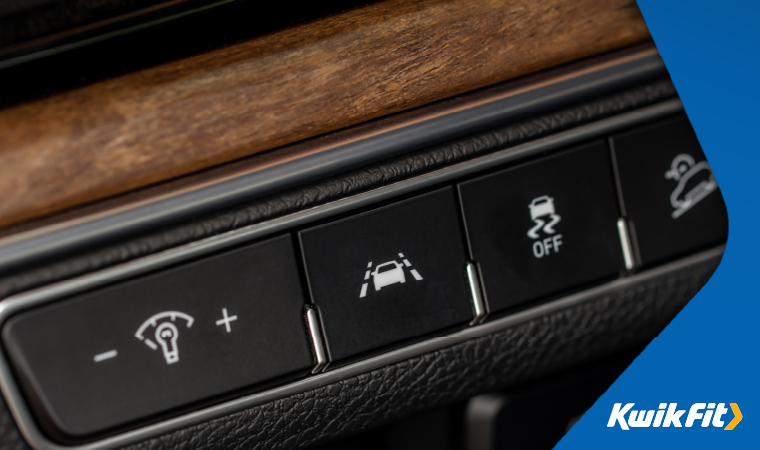The Importance of Regular ADAS Calibration
Jack Dreyer | Monday 9th September 2024 8:00am

Advanced Driver-Assistance System, also known as ADAS, is a collection of electronic systems, essentially in-built safety tech, that assist drivers with a number of functions, including braking and parking.
In order to reduce the number of hazards and accidents caused by human error, more and more vehicles are designed with ADAS features included — a great and practical development for keeping drivers alert on the road.
But, as with all car components, ADAS requires servicing to ensure it’s working effectively and optimally. This is known as ADAS calibration.
So, why is it important for our ADAS to receive regular calibration? Read on to find out.
Why does your vehicle’s ADAS need regular calibration?
Your vehicle’s ADAS is a combination of individual sensors and software systems that are partnered with steering, suspension, braking, and powertrain systems to keep your vehicle safe on the road. These sensors and systems need regular calibration so they can accurately and effectively scan and detect potential hazards.
Without regular calibration, the different features and systems that make up ADAS wouldn’t work effectively, increasing the risk of hazards and potential accidents.
ADAS features include (but are not limited to):
Adaptive cruise control
Adaptive cruise control works similarly to traditional cruise control in that drivers can set a speed. However, the system uses radar, or sometimes cameras, to detect obstacles and can automatically decelerate your vehicle when you're approaching another car.
Autonomous emergency braking
Autonomous emergency braking will use sensors, often the same ones as adaptive cruise control, to warn drivers of approaching hazards. If you don’t react to the dashboard warning lights or alarm by pressing the brake, the system will operate an all-out braking force.
Lane departure warning
If you own a new vehicle, you may have noticed a warning, such as a pulse through the steering wheel or a noise alert, to let you know if your vehicle is steering out of the lane. This feature is particularly important when drivers are undertaking long drives on dual carriageways and motorways.
You can find out more about the different types of ADAS in another of our blogs.

Are there different types of ADAS calibration?
Yes, there are two types of ADAS calibration - static and dynamic. The type of calibration your vehicle needs will depend on its make and model, and the ADAS technology installed.
If in doubt, check your vehicle handbook or reach out to a professional for support.
Static ADAS calibration
A static calibration uses specialist equipment to adjust the ADAS cameras and sensors whilst the vehicle is stationary. Professionals will check the wheel alignment and make adjustments if necessary, as well as calibrate the vehicle’s sensors.
Dynamic ADAS calibration
A dynamic calibration is the very opposite of static - the ADAS cameras and sensors are adjusted while the vehicle is in motion, i.e. during a road test. The process normally takes between 15 and 30 minutes.

The impact on performance & safety if ADAS isn’t calibrated correctly
While all vehicles have passive safety features in place like airbags and seat belts, newer cars are being designed to be safer and more responsive to reduce the risks of accidents occurring.
ADAS plays a crucial role in this, so the impacts on performance and safety can be severe if the systems and sensors are not calibrated correctly and regularly.
For one, the ADAS features will likely stop working if they’re not calibrated or are calibrated incorrectly. This could lead to your vehicle failing to pick up or detect potential hazards or problems, increasing the risk of accidents.
Additionally, you may find your vehicle doesn’t start at all if the ADAS features aren’t calibrated and working properly, as your vehicle may require certain features to work in order to start moving.
Finally, if your vehicle’s ADAS features haven’t been calibrated correctly, you run the risk of these features failing to function effectively while you're driving, which may cause your vehicle to initiate manoeuvres that are not necessary and unsafe.
Get your ADAS calibrated at Kwik Fit
Hopefully, you now have a good understanding of why your vehicle’s ADAS needs calibrating regularly, and the potential safety implications if it’s done incorrectly. If you’re unsure of what you need to do to keep your vehicle’s in-built safety tech up to date, or whether your vehicle requires this service, get in touch with your local Kwik Fit centre for advice.
You can find out which of our centres can carry out a static or dynamic calibration by exploring our map.
And, in the meantime, check out our Kwik Fit blog for all the latest motoring news and trends.
Any facts, figures and prices shown in our blog articles are correct at time of publication.
Featured Articles
Is it Illegal to Drive With One Headlight?
Saturday 19th July 2025
Wondering if it’s illegal to drive with one headlight? Learn about the safety risks and penalties of illegal blown bulbs and why you should fix them promptly.
Air Con in EVs & Hybrids: Experts Answer Your Questions
Monday 30th June 2025
Does air con drain EV batteries? Can you use the air con while charging an electric car? Find out the answers to these questions & more from Kwik Fit’s experts.
Why Is Your Car Making a Noise? Fixes & Tips
Friday 13th June 2025
When your car starts making unexpected noises, it can certainly be quite disconcerting; it may be nothing to worry about, but here’s what you need to know.









